Tag Archive: symbol
October 7, 2012
by Carole Zangari -
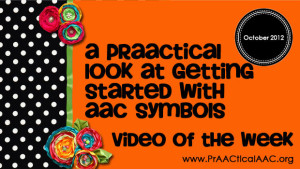
For this week’s video, we head back to the Aaron W. Perlman Center at Cincinnati Children’s Hospital Medical Center for a wonderful video about getting started with AAC symbols. We know you will enjoy this overview of some of the most popular AAC symbols and the lovely examples they share. –
Filed under: Video of the Week
Tagged With: AAC system, choice making, getting started, implementation ideas, intervention, symbol
September 17, 2012
by Carole Zangari -
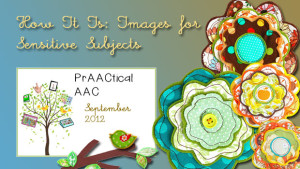
There are things no one likes to talk about. Serious things. Sensitive things. Nonetheless, everyone deserves the tools to be able to talk about whatever they want to share. The How It Is Project, by the UK-based Triangle organization, offers a set of free pictures developed so that everyone has access to images they can use to talk about their feelings, their rights, personal safety, personal care, and sexuality. We love how they developed the vocabulary list and symbols on the site with the help of children and youth with and without disabilities. You can download the document with images here.
Filed under: PrAACtical Thinking
Tagged With: advocacy, self-advocacy, symbol, vocabulary
June 23, 2012
by Carole Zangari -
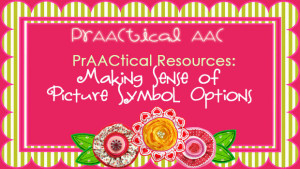
Yes, a picture’s worth a thousand words. But which pictures are the ‘right’ pictures for your client’s AAC system? There is a lots to be said on the subject of symbol selection but in this post we focus on exploring the options. This set of slides by Sally Millar and CALL Scotland is a concise chart with a great many symbol types. – The chart is packed with useful information, including examples, distinguishing features, intended use, associated software, comments and contact information. We love the section on picture symbols specifically for adults with symbols for self-advocacy and independent living. – Happy exploring!
Filed under: PrAACtical Thinking
Tagged With: resources, symbol
February 18, 2012
by Carole Zangari -
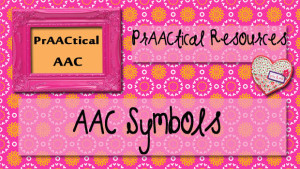
One of the first things that many SLPs ponder when doing an AAC assessment is about how language will be stored on an SGD, no-tech communication tool, visual support or AAC app. The issue is this: What symbols are best for this person’s communication aid? This is never an easy question to answer, but the proliferation of symbols used in visual supports, communication aids, SGDs, and AAC apps has made the process even more challenging. – There are several ways in which we go about answering that question, but that’s a post for another day. In this post, we want to share some of the most comprehensive sources for identifying your symbolic options. Here are some sites you may want to bookmark. – 1. A Guide to Selecting Pictures and Symbol Sets for Communication by Sally Millar 2. Comparison chart of AAC symbol sets and systems by Spectronics 3.... [Read More...]
Filed under: PrAACtical Thinking
Tagged With: resources, symbol
February 14, 2012
by Carole Zangari -
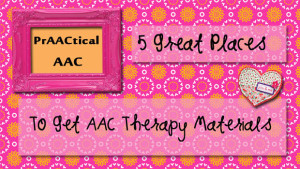
1. Various activities for the K-12 set from the SLPs and educators in Jefferson Parish, Louisiana. 2. For AAC systems that use DynaVox SGDs make sure to explore the DV Implementation ToolKit 3. For AAC systems that use Pixon symbols 4. All kinds of goodies in Ms. Click’s classroom site. (Those of us here in South Florida especially love the materials for hurricane preparaton.) 5. For AAC systems that use Minspeak/Unity, the AAC Language Lab has a host of resources.
Filed under: PrAACtical Thinking
Tagged With: download, symbol
January 13, 2012
by Robin Parker -
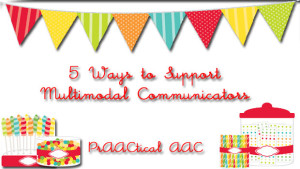
Like you, we are always looking at ways to take communication and language to the next level. We’re never really satisfied. Although we may be thrilled with things that our AAC friends are doing now, we can’t stop thinking about the next step. And often that involves helping communication partners facilitate the language learning process. When multimodal communicators interact, we try to react to solidify the language learning. Here’s are some of the things that have helped communication partners we’ve worked with. We’re learning to REACT by responding, expanding, acting, commenting, and turn-taking. 1. Respond to the Intent. What is the communicator trying to tell you? If you know what, then start doing it. If you’re not sure, take your best guess and start doing it. For the emerging communicator, respond quickly. For the more established communicator, begin to respond quickly so they know that you ‘got’ the message,... [Read More...]
Filed under: PrAACtical Thinking
Tagged With: expression, facial expression, partners, symbol





